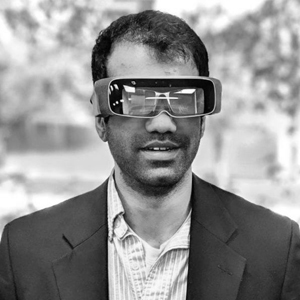- Technology
- SEE MORE
- classical
- general
- talk
- News
- Family
- Bürgerfunk
- pop
- Islam
- soul
- jazz
- Comedy
- humor
- wissenschaft
- opera
- baroque
- gesellschaft
- theater
- Local
- alternative
- electro
- rock
- rap
- lifestyle
- Music
- como
- RNE
- ballads
- greek
- Buddhism
- deportes
- christian
- piano
- djs
- Dance
- dutch
- flamenco
- social
- hope
- christian rock
- academia
- afrique
- Business
- musique
- ελληνική-μουσική
- religion
- World radio
- Zarzuela
- travel
- World
- NFL
- media
- Art
- public
- Sports
- Gospel
- st.
- baptist
- Leisure
- Kids & Family
- musical
- club
- Culture
- Health & Fitness
- True Crime
- Fiction
- children
- Society & Culture
- TV & Film
- gold
- kunst
- música
- gay
- Natural
- a
- francais
- bach
- economics
- kultur
- evangelical
- tech
- Opinion
- Government
- gaming
- College
- technik
- History
- Jesus
- Health
- movies
- radio
- services
- Church
- podcast
- Education
- international
- Transportation
- Other
- kids
- podcasts
- philadelphia
- Noticias
- love
- sport
- Salud
- film
- and
- 4chan
- Disco
- Stories
- fashion
- Arts
- interviews
- hardstyle
- entertainment
- humour
- medieval
- literature
- alma
- Cultura
- video
- TV
- Science
- en
Bringing the AR of the Military to the Eyes of Consumers, with ThirdEye Gens Nick Cherukuri

A lot of XR\ntechnologies started from projects in the military sector, including\nAR. Today\u2019s guest Nick Cherukuri is working to bring what he\u2019s\nlearned from years working in tech for the defense department, and is\nbringing it all to enterprise \u2014 and eventually, consumers \u2014 with\nhis line of AR glasses.\n\n\n\n\n\n\n\nAlan: Hey, everyone, it\u2019s Alan Smithson here today. We\u2019re speaking with Nick Cherukuri, founder of ThirdEye, about their all-in-one AR glasses hardware and software solution for enterprise in logistics, manufacturing, and engineering and how these tools are revolutionizing how we work. All coming up next on the XR for Business Podcast. \n\n\n\nWelcome to the show, Nick.\n\n\n\nNick: Thanks, Alan. Glad to be\non.\n\n\n\nAlan: I\u2019m really excited. You\nguys have a really original and awesome looking pair of glasses for\nthe enterprise. Walk us through your X2 glasses and how are people\nusing them? What makes them stand out from the competition? What\u2019s\nthe form factor? Just walk us through your solution.\n\n\n\nNick: Definitely. So just to\nprovide some background about ThirdEye, while we may be a relatively\nnew name in the commercial space, we have over 20 years of experience\ndeveloping this technology for the United States Department of\nDefense. So that\u2019s our origin story. And as you may know, the\nmilitary, a lot of the technologies we use today have evolved from\nthere, so for example, the Internet, GPS, even Siri for your iPhone\noriginally came from SRI, which is right down the road from us in\nPrinceton, developed there and Apple bought it off them. So the\nmilitary has been a great incubator for these advanced technologies. \n\n\n\n\nAnd augmented reality, it\u2019s definitely considered the next major tech platform. So we\u2019ve been developing a lot of AR hardware and software applications for the military. And a few\u2013 a couple of years ago, we decided to take some of our technical know-how, our leading engineers \u2014 we have state-of-the-art labs here in Princeton, New Jersey \u2014 and we decided to develop a commercial product. So we spun off into ThirdEye and we created\u2013 just this year, we\u2013 earlier this year, we released our X2 mixed reality glasses. So there\u2019s just some high-level overview of the X2. We wanted to really address the customer concerns. We felt this was an optimal time to get into the commercial market. So we feel it\u2019s too early for the consumer market right now, but the commercial AR market is definitely something that we are seeing a lot of traction happening.\n\n\n\nSo we wanted to develop a pair of\nglasses that really hit some of their needs. And some of the needs we\nheard were the glasses had to be entirely hands-free. For example,\nmany workers, they have safety requirements, where they cannot have\nany wired packs. So you can\u2019t have a wired processing pack or a wired\nbattery pack. It needs to be all hands-free, compacted to one pair of\nglasses. So that was perhaps the most critical use case that we\nheard, that this is\u2013 you had to develop the glasses in a way that\u2019s\nentirely hands-free. So we made our X2 glasses entirely hands-free at\nabout nine ounces form factor. So it\u2019s something that can be worn for\na lengthy period of time. Another use case that we listened to was,\nit has to be attachable to a hardhat. So the glasses could be as\nadvanced as you want, but if it can\u2019t attach to a hardhat, or to a\nbumpcap, and meet some basic ANSI industrial certifications \u2014 ANSI\nZ87 \u2014 then it can\u2019t be used in these industrial settings. So that\u2019s\nsomething that we definitely incorporated into our glasses, to be\nattachable to a hardhat, and to a bumpcap.\n\n\n\nOur glasses are Android-based, so it\u2019s really easy to make access for upgrading to Android 9 soon, so we